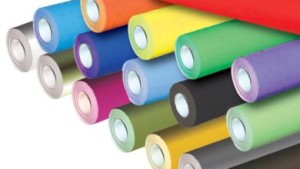
One of the oldest applications of dyes and pigments is the paper and pulp industry. There are several grades and varieties of paper that undergo the dyeing process besides the regular writing paper. Some of them include copier papers, facial tissue paper, envelope grades, cover papers, corrugated cases and specialty papers.
Dyes that find use in the Paper Industry
The major dyes that go for use in paper industry include the cationic direct dyes and sulphur dyes with direct black 22 being one of the significant ones. Additionally, basic dyes and acid dyes are also popularly used in the paper and pulp industry. Certain features of direct dyes make them a popular choice in this context such as having a planar molecular structure, a greater positive charge over surface groups with negative charge and an extended conjugation.
Criteria for Dye Selection
There are list of properties that need to be possessed by the dye in order for it to be suitably used in the paper industry. A few of them comprise possessing good affinity, light fastness, bleed fastness, stability to humidity and temperature, right shade, clear backwaters, regulatory compliant, optimum depth, absence of impact on other paper parameters or processes and being safe to handle.
Commonly used Pigments in Paper Industry
As for pigments, besides the significant role played by pigments for paint industry, an equally vital role is played by them in the paper industry. Some of the commonly used pigments in the paper industry include the fluorescent pigment dispersion group, standard pigment dispersion group and the specialty pigment coatings class of pigments. A wide array of shades exist in the standard group while the vibrant and fluorescent colors of the fluorescent pigment shade group enable inter-mixing for churning out some exciting shades. Specialty coats comprise of a certain group of non-metallic pigments which are suited to varied latex binder systems. However, this class is unsuited to processes which involve beater dyeing.
Considerations for Pigment Selection
There are several considerations that decide the type of pigment to be used. If the paper needs to be less bright then the yellow and red section of the visible spectrum has to be lessened and the pigment which allows for greater absorption of these sections is chosen. Their inclusion will decrease the brightening effect to the desired levels. For an increase in brightness, blue and violet dyes are some of the colorants used along with the optical brighteners.
Current Trends
In today’s age with advancements in machinery there is a greater trend towards decrease in use of conventional basic dyes and increasing use of specialty improved direct and basic dyes. Newer coloration techniques are developed amidst the growing pressures from regulatory bodies, need for clearer backwater and lowered costs of production. Greater swing towards press or continuous dyeing and usage of environment friendly dyes is being seen. Biodegradable dyes or dyes without any heavy metal or amine content have become a popular choice. Certification from Ecological and Toxicological Association (ETAD) is a must.
Summarizing
Dyes and pigments both form an important aspect of the paper and pulp industry. Sourcing your dye and pigment requirements from reputed manufacturers and dealers is a must for attaining color perfections in the paper and pulp industry.